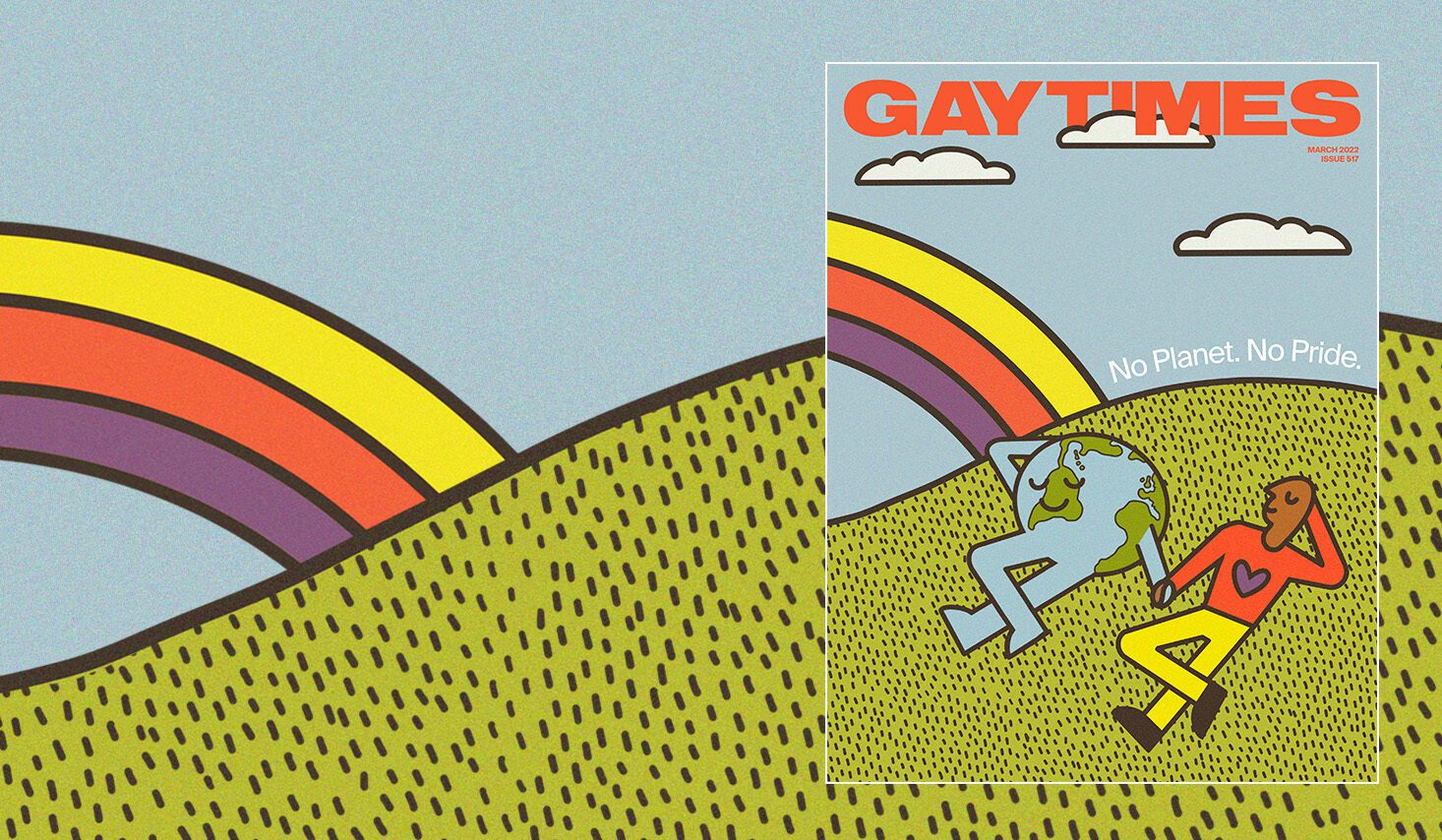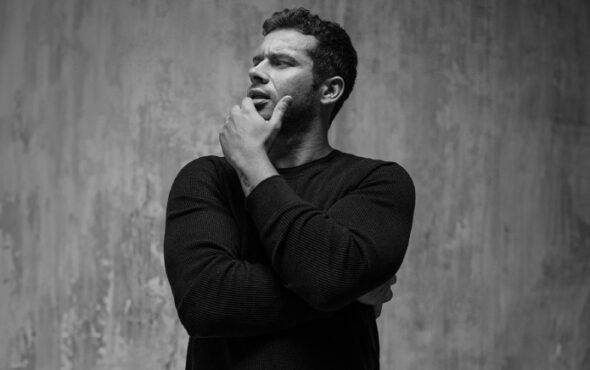
Look out of the window; the climate crisis is already happening. Winters are getting shorter, flowers are blooming months earlier than they should, and insects are being wiped out en-masse. The picture is apocalyptic, which is why it can be tempting to bury heads in the sand and think of the climate crisis as an isolated event, with no connection to other injustices already being faced in the world. Yet as a ‘threat multiplier’ – meaning that any cracks, imbalances or inequities in current society get amplified in its increasing presence – it’s the most significant social justice issue of our time. We are already seeing that those at the sharp end of the climate crisis tend to be the most vulnerable and marginalised, especially people with gender-specific risks in disaster displacement contexts such as trans, non-binary and intersex individuals, meaning that LGBTQ+ communities worldwide, many of whom have faced historical oppressions, have to confront a unique threat.
Of course, an uninhabitable Earth is an uninhabitable home for all. As global emissions fail to slow, clocking in at record highs year on year, and we continue to release billions of tonnes of carbon dioxide (CO2) into the atmosphere, a terrifying chain of events has already been triggered. The climate crisis isn’t just about rising temperatures; it’s also about the depletion of carbon sinks (natural environments like forests and oceans which absorb CO2 from the atmosphere), ocean acidification, the extinction of species on land and in water, rising sea levels, the depletion of freshwater resources, the disruption of water and food cycles, floods, droughts, famines and large-scale migration. The scale of the climate crisis is often hard to conceptualise because it is unlike anything modern society has ever had to deal with and is entirely man-made.
In 2015, the Paris Agreement, a legally binding international treaty on climate change, committed to limiting global warming by 1.5 degrees by 2100. Today, 80 years before this deadline, we have already heated the planet by an average of 1 degree compared with pre-industrial levels. And as it stands, we’re on track for more than 2.4 degrees warming by the end of the century, despite all the carbon-cutting pledges made during COP26 in Glasgow, the annual United Nations Climate Change Conference. If it feels like time is quickly running out to stop the domino effect, it’s because it is. “Nobody’s safe, and it’s getting worse faster. We must treat climate change as an immediate threat,” Inger Andersen warned at the most recent Intergovernmental Panel on Climate Change (IPCC) press conference.
So with all this in mind, what does climate justice have to do with LGBTQ+ justice? And how are these two issues, which feel so far apart from one another, linked? I spoke with queer climate activists and relevant organisations to find out.
An intersectional fight
“When you think of systemic and root causes of the climate crisis, it feels like capitalism and colonialism are at the top of my list”, says Orion Camero, a 29-year-old climate activist based in occupied Chochenyo Ohlone land, also known as Oakland, California. Their entrance into the climate justice movement was through community organising with an anti-water privatisation group called Restore the Delta. The group fought the development of twin tunnels planned to extract the water from the river Orion lived next to.
Indeed, it’s difficult not to see colonialism and capitalism as the driving force of the climate crisis due to the extractivist nature of both. Extractivism refers to extracting natural resources from the Earth to sell to the world market. Not only have colonialists and imperialists historically murdered indigenous peoples (who have traditionally protected the Earth’s biodiversity) and forced them off their lands, they also utilised extractivist processes to build wealth by clearing forests and mining for precious materials as well as fuel in the lands they pillaged. Unfortunately, these practices continue today; we are witnessing the loss of forests the size of the UK each year, oil giants continue to pump and profit, and a record number of environmental activists, many of whom are indigenous, continue to be murdered.
Queer existence challenges constructs and therefore positions queer people to see the nuance because of life-long marginalisation.
Moreover, a large part of the world economy has been built on the idea that resources are infinite and therefore can be extracted unsustainably. We know this is a fallacy, and so do experts. Naomi Klein, author of This Changes Everything: Capitalism vs. The Climate argues that the climate crisis is a “civilisational wake-up call. A powerful message—spoken in the language of fires, floods, droughts, and extinctions—telling us that we need an entirely new economic model and a new way of sharing this planet.”
“The environment is not only the physical environment, but it’s also our mental environments, our social environments, our economic environments, and we’re swimming in the intersections of all of those systems every single day,” Orion continues. They think that queer existence challenges constructs and therefore positions queer people to see the nuance because of life-long marginalisation. “Inspiriting queer leadership has redefined and introduced revolutionary ways of finding solutions because we’re able to see the different layers in how the climate crisis has and will continue to impact us.”

Risk of homelessness
“I fight an intersectional fight as I believe there is no climate justice without social justice and that every crisis that the planet faces is a human rights issue,” says Jada L. Kennedy, a 20-year-old queer black environmentalist based in Belgium. They got into climate activism in 2019, when they were also experiencing an “identity crisis around race”. Since then, they have been part of Fridays for Future, a youth-led global grassroots movement and Generation Green, a young Black-led, intergenerational community fighting for environmental justice. In particular, they are concerned about the convergence of homelessness faced by LGBTQ+ individuals and the climate crisis. “When queer people [already] struggle with homelessness because of being abandoned by their families, they will be hit the hardest due to the immediate vulnerability to their safety.”
As frequent extreme weather events, such as blizzards and heatwaves, ramp up, rendering some parts of the planet uninhabitable, those sleeping rough on the streets are being put at direct risk of harm. Rising pollution levels and city smog can also lead to long-term health complications, meaning that homeless people risk far more exposure to respiratory conditions like asthma, heart disease and lung cancer. Though homelessness can be hard to quantify, Crisis, the national charity for homeless people in the UK, reported that up to 24% of homeless youth are LGBTQ+ and that around 227,000 people were rough sleeping, sleeping in vans and sheds, and stuck in B&Bs – across England, Scotland and Wales in 2021. The number of rough sleepers in the country has risen by almost 4 times since 2010, when the Conservative Government came into power.
Marginalised folk already experiencing inequality have a far harder time getting back on their feet after natural disaster strikes
The inverse is happening too; the climate crisis also makes more people homeless. Not only are flash floods, heatwaves, wildfires, droughts and typhoons becoming more frequent, but they are also leaving entire communities homeless. In America, there are fears that millions of people will have to leave their current residences semi-voluntarily or forcefully in the coming years. Marginalised folk already experiencing inequality have a far harder time getting back on their feet after natural disaster strikes, as they are less likely to have the resources to move to a safer place or rebuild their homes. The effects of the climate crisis are cyclical, so mass intervention is even more crucial.
Fast fashion
“I first got into climate activism when I was 18 because I had a fashion blog,” says Izzy McLeod, a renewable energy student based in Cardiff. “My fashion blog eventually became a sustainable fashion blog.” Their interest in fashion got them thinking about global supply chains and how fast fashion can rainbow-wash the climate crisis. So they founded #WhoMadeMyPrideMerch, a campaign pushing for better working conditions for LGBTQ+ garment workers and more sustainability in the fashion industry.
The global garment industry accounts for around 10% of total greenhouse gas emissions from human activity and nearly 20% of wastewater; worse for the planet than aviation and shipping combined. If that wasn’t scary enough, our clothes are increasingly made with synthetic fabrics that release microfibers into oceans, further polluting our water systems. Swallowed up by fish and travelling up the food chain, the plastic ultimately ends up on our plates. Worse still is the treatment of garment workers, many of whom are notoriously underpaid and mistreated. “It’s about calling out rainbow-washing and saying ‘excuse me, you say you’re doing stuff for the community, but what are you doing to support the LGBTQ+ people making the clothes while you continue to profit from rainbow-washing? What are your doing in your supply chains?” they continue.
For many in the LGBTQ+ community, fashion is a tool of self-expression, and it allows us to carve out our ever-evolving identities. From Alexander Wang and Versace to Yves Saint Laurent and Alexander McQueen, queer icons have shaped the fashion industry as we know it today. Yet even the fashion industry cannot be decoupled from the climate crisis, and it especially cannot be decoupled from the people who make our clothes in squalid conditions. “We live in a global system. Anything we do in the Global North is going to affect people in the Global South, who are already experiencing the brunt of the climate crisis,” Izzy says.
Climate justice and migrant justice
As the global temperature rises to an unbearable degree and natural disasters destroy people’s homes, we are set to see far more climate-related migration. Non-governmental organisations like the Joint Council for the Welfare of Immigrants (JCWI) have played a key role in resisting the British government’s Hostile Environment policies, which increasingly put vulnerable people at risk who are forced to make treacherous journeys to reach safer lands.
“Climate justice and migrant justice are completely interrelated, and there are strong historical reasons for that,” says Mary Atkinson, a Campaigns Officer at JCWI. “The richest countries in the world cause the vast majority of fossil fuel emissions, while people in the Global South are bearing the brunt of it. Imagine you’re a farmer in Bangladesh and your livelihood is affected by the climate crisis, to the extent that you can no longer feed your family – you have to move to survive, and increasingly you’ll have to move away from your entire region. But the way our bordering system is set up makes that movement perilous – only the rich have the right to move safely.”
As the global temperature rises to an unbearable degree and natural disasters destroy people’s homes, we are set to see far more climate-related migration
In the UK and other parts of the world, we have also seen a toughening of borders and an increase in authoritarianism, which will directly affect LGBTQ+ asylum seekers and refugees from countries worldwide currently seeking to escape their homes for a safer environment. There are fears that Priti Patel’s new Nationality and Borders Bill will put them at more risk and increase the “standard of proof” needed for LGBTQ+ asylum. “The trend towards harder borders is not a new thing,” Mary continues. “We’ve been kind on this path for decades. There’s a huge amount of money to be made from, from strengthening borders and then, there’s also a huge amount of money to be made from people who smuggle people across borders. And those two things are a kind of symbiotic relationship.”
Mary believes that learning about the linking of injustices is crucial for progress on all social justice fronts. “A key reason that so many LGBTQ+ people have to seek safety in other countries is because of the colonial past of criminalising and scapegoating queer people,” she explains. “Learning about those links is so important. Many people don’t know that the government sends basically empty charter flights once every two weeks, deporting people who’ve grown up here, lived here all their lives and have families here. And there are like seven people on the flight. Apart from the unimaginable damage that that does to communities and families, those are empty planes!”
Bill polluters rainbow-washing during Pride
Though the fight against the climate crisis is a disruption that has to happen on a planetary scale, it’s essential to also ask what LGBTQ+ communities can do within our own spaces. Therefore, an obvious question might be, how can we make Pride Month and Pride parades more environmentally conscious?
The concept of the Pride march, with its revolutionary history, is an empowering way to show local and international queer solidarity and resistance and to also build coalitions with tangential movements. In 2019, Pride in London declared a Climate Emergency in response to demands by Extinction Rebellion. In the same statement, the volunteers also vowed to make Pride in London carbon neutral by 2020. Yet until 2022, Barclays was one of the biggest Pride in London sponsors. This is the same Barclays that has financed more fossil fuel projects than any of the UK’s largest banks in the months leading up to the COP26 climate talks in Glasgow. Amazon Prime Video was also a sponsor. Amazon as a company emitted the equivalent of 60.64 million metric tons of carbon dioxide in 2020, which is more than the carbon output of countries like Portugal, Finland, Hungary and Morocco.
When I reached out to Pride in London for comment, a spokesperson responded: “Amazon and Barclays are actually not involved in Pride in London’s 2022 event as sponsors – the website is going through an update phase, and their presence has been removed.” They also gave a more comprehensive statement regarding their commitment to sustainable practises: “Pride in London continues to implement measures such as the ban of the sale of single-use plastics, glitter, and other harmful waste at any events that carry our brand. With our partners at local authorities, Pride in London works to make sure that less waste is sent to landfill.”
The LGBTQ+ community has much knowledge to offer because of our individual, as well as shared, histories of struggle, resistance, joy and hope
Though there is increasing awareness of climate justice during Pride Month coverage and Pride parades, queer climate activists insist that it’s even more critical that big polluters – who continue to seek out and fund LGBTQ+ individuals, events and safe spaces to infiltrate and rainbow-wash their environmentally harmful practices – don’t hijack the cause. “Oftentimes, corporate sponsors commodify or make hollow the original roots of Pride,” Orion says. “I think there’s a lot of invisible violence that happens and that’s why it is a source of anger for people to see that these sponsors are celebrating queer communities while literally destroying or creating more possibilities for harm to those very communities. That narrative needs to be brought to the forefront.”
Queer solutions
Can queerness also help us reimagine the climate justice movement? I spoke to Lee Pivnik from the Institute of Queer Ecology to explain the seemingly unlikely link between queerness and ecology, which can help us reimagine our approach to the climate crisis. “For me, queerness is about relationality and about the new ways of kind of creating yourself,” he says. “Fluidity is about redetermining who you are as you grow and change, so queer ecology is about leaning into that kind of change. It’s also about alternative support systems. I find this understanding really helpful to look through ecology and environmental issues.” As a representation of all the weird and wonderful things in our society, queerness therefore can offer innovative climate solutions and help rethink our relationship not only to each other, but also the natural environment.
Considering that some straight men will avoid reusable plastic bags and other environmentally-friendly efforts because they would be regarded as ‘feminine’, it seems crucial to deconstruct binary narratives of sex and gender in ecology, especially in educational systems. Through queer ecology, Lee has learned about hundreds of case studies of different homosexual or queer or trans relations in the natural world, allowing him to see other frameworks of symbiosis, of living things existing together in ways that weren’t taught to him at school.
Ecology is the most subversive science because it talks not only about individual nodes in an ecosystem, but the connectivity of everything
Lee also thinks that ecology is the most subversive science because it talks not only about individual nodes in an ecosystem, but the connectivity of everything. “Everything becomes very cosmological. Queer ecology is a way of understanding the relationality of everything,” he continues. Where to start with queer ecologies? Seminal texts include Queer Ecologies: Sex, Nature, Politics, Desire by Catriona Mortimer-Sandilands and Cruising Utopia by José Esteban Muñoz, which Lee believes can be “implemented as a guideline for queer ecology”.
As someone who studied ecology in college, I don’t remember lessons on the impact of the climate crisis on marginalised communities, or being encouraged to think outside the box when it came to climate solutions. Yet it’s clear that this is what we need the most in mainstream conversations.
When it comes to survival skills, the LGBTQ+ community has much knowledge to offer because of our individual, as well as shared, histories of struggle, resistance, joy and hope. Today, countless grassroots organisations, many of whom are being led by queer activists, embody these beliefs and work hard to tackle climate issues of all scales. Just a few months ago, the #StopCambo campaign managed to halt the development of a huge oil field in the North Sea. The will for intersectional climate justice is already there, but it still desperately needs support of the masses.
As we hurtle towards a Sixth-Mass Extinction event, LGBTQ+ justice will play a key role within the climate justice movement. The more we link social injustices, the quicker we will get to living harmoniously on a thriving planet. If queerness is inherently political, so is climate justice.



